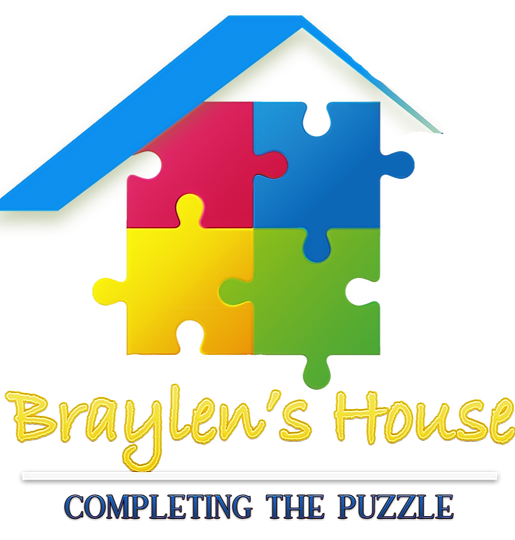How common is Autism?
According to the CDC’s Autism and Developmental Disabilities Monitoring (ADDM) Network, approximately 1 in 31 eight-year-old children in the U.S. was identified with autism in 2022—up from 1 in 36 just two years earlier. Rates are slightly lower among younger children (about 1 in 34 for four-year-olds). Boys are diagnosed at about three to four times the rate of girls, and prevalence varies across racial and ethnic groups.
These rising numbers reflect improved diagnostic practices, broader awareness, and stronger outreach—particularly in underserved communities—not an increase in the actual number of autistic individuals.
_edited_edited_edited.png)
🌱 Early Signs of Autism
Autism can be identified as early as 18 months—and sometimes even earlier. Early detection is key to getting children the support they need to thrive.
Every child develops at their own pace, but some early signs of autism may include:
🚼 In Infants and Toddlers:
-
Limited or no eye contact
-
Doesn’t respond to their name by 12 months
-
Delays in babbling or using gestures (like pointing or waving)
-
Rarely smiles or shows social engagement
-
Repetitive behaviors like rocking, flapping hands, or spinning objects
-
Unusual sensitivity to sounds, textures, or lights
-
Prefers to play alone or lines up toys instead of playing with them
In Preschoolers and Young Children:
-
Limited interest in other children or difficulty making friends
-
Trouble with verbal and nonverbal communication
-
Difficulty expressing emotions or understanding how others feel
-
Strict routines or resistance to change
-
Strong interests in specific topics, objects, or patterns
💡 Why Early Intervention Matters
The earlier autism is identified, the sooner children and families can access therapies, education plans, and support services tailored to their unique needs. Early intervention has been shown to improve communication, behavior, and learning outcomes.
The more you understand their world, the more possibilities you will see.
Sesame Street

🧠 JCPS Autism Assessment Process: A Guide for Families
Who Can Be Assessed?
Jefferson County Public Schools (JCPS) will assess any child aged 3 to 21 who is suspected of having a disability, including autism—whether they're enrolled in JCPS or not Kentucky Department of Education+14featoflouisville.org+14portal.ksba.org+14.
How Does the Assessment Work?
-
Referral
A referral can be made by anyone—parents, teachers, outside professionals, or other concerned individuals. The process begins with submitting a written referral noting developmental or academic concerns portal.ksba.orgCore Docs. -
ARC Meeting #1 – Consent & Planning
You’ll be invited to an Admissions and Release Committee (ARC) meeting to discuss your concerns. With parent consent, JCPS initiates a comprehensive evaluation to explore the suspected disability areasjefferson.kyschools.us+9featoflouisville.org+9Google Sites+9. -
Multidisciplinary Evaluation
The evaluation must be thorough and cover relevant areas such as:-
Communication skills (language, gestures, pragmatics)
-
Social/emotional development
-
Behavior and sensory responses
-
Academic performance and cognitive functioning
-
Motor skills and adaptive behavior
Standardized testing is supplemented with teacher and parent interviews, classroom observations, and real-world context to build a complete picture Kentucky Department of Education+3Kentucky Department of Education+3Core Docs+3Kentucky Department of Education+1portal.ksba.org+1.
-
-
ARC Meeting #2 – Eligibility Decision
Based on all assessment data, the ARC determines whether eligibility criteria for autism (as defined under IDEA and Kentucky’s regulations) are met. If eligible, an Individualized Education Program (IEP) is developed to support academic, social, and functional goals jefferson.kyschools.us+4Kentucky Department of Education+4featoflouisville.org+4. -
IEP Implementation & Review
Once the IEP is established, services are delivered through JCPS’s Exceptional Child Education (ECE) system. The IEP is reviewed at least annually (and reassessed regularly) to ensure progress and update goals as needed Google Sites+2portal.ksba.org+2portal.ksba.org+2jefferson.kyschools.us+6jefferson.kyschools.us+6jefferson.kyschools.us+6.
Why This Process Matters
-
🧠 Comprehensive & Person‑Centered: Evaluations integrate multiple perspectives—medical, educational, behavioral—to ensure accurate identification of needs.
-
🎯 Skillful Teamwork: The ARC includes parents and professionals including teachers, caregivers, and specialists—ensuring your child’s full profile is considered Google Sites.
-
🏫 Supports That Work: Coordinated interventions and evidence-based strategies help when regular instruction alone isn’t meeting your child’s needs Kentucky Department of Education.
✅ Summary at a Glance
StepWhat Happens
1. ReferralAnyone can initiate, ages 3–21
2. ARC MeetingParent meets with team to plan evaluation
3. AssessmentMultidisciplinary review (tests, observation, interviews)
4. EligibilityARC evaluates data and determines autism eligibility
5. IEPDevelop goals and supports; annual reviews follow
🤝 What You Can Do as a Parent
-
Share observations about your child’s early development: talking, social interactions, routines, sensory patterns.
-
Attend both ARC meetings if possible.
-
Ask questions and take notes during evaluation meetings.
-
Keep copies of all forms and communications, including referral documents and assessment reports.
-
Connect with JCPS ECE office or family resource centers for extra support.
.png)